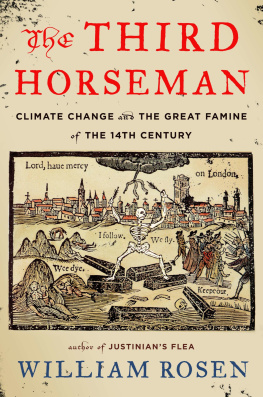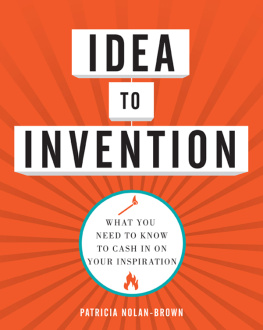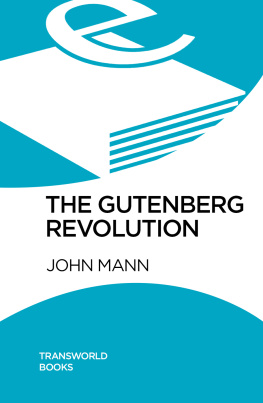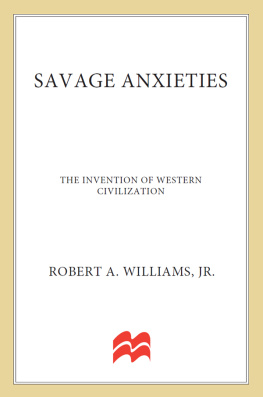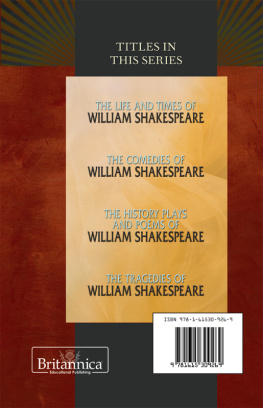William Rosen - The Most Powerful Idea in the World: A Story of Steam, Industry, and Invention
Here you can read online William Rosen - The Most Powerful Idea in the World: A Story of Steam, Industry, and Invention full text of the book (entire story) in english for free. Download pdf and epub, get meaning, cover and reviews about this ebook. year: 2010, publisher: Random House, genre: Romance novel. Description of the work, (preface) as well as reviews are available. Best literature library LitArk.com created for fans of good reading and offers a wide selection of genres:
Romance novel
Science fiction
Adventure
Detective
Science
History
Home and family
Prose
Art
Politics
Computer
Non-fiction
Religion
Business
Children
Humor
Choose a favorite category and find really read worthwhile books. Enjoy immersion in the world of imagination, feel the emotions of the characters or learn something new for yourself, make an fascinating discovery.

- Book:The Most Powerful Idea in the World: A Story of Steam, Industry, and Invention
- Author:
- Publisher:Random House
- Genre:
- Year:2010
- Rating:5 / 5
- Favourites:Add to favourites
- Your mark:
- 100
- 1
- 2
- 3
- 4
- 5
The Most Powerful Idea in the World: A Story of Steam, Industry, and Invention: summary, description and annotation
We offer to read an annotation, description, summary or preface (depends on what the author of the book "The Most Powerful Idea in the World: A Story of Steam, Industry, and Invention" wrote himself). If you haven't found the necessary information about the book — write in the comments, we will try to find it.
William Rosen: author's other books
Who wrote The Most Powerful Idea in the World: A Story of Steam, Industry, and Invention? Find out the surname, the name of the author of the book and a list of all author's works by series.
The Most Powerful Idea in the World: A Story of Steam, Industry, and Invention — read online for free the complete book (whole text) full work
Below is the text of the book, divided by pages. System saving the place of the last page read, allows you to conveniently read the book "The Most Powerful Idea in the World: A Story of Steam, Industry, and Invention" online for free, without having to search again every time where you left off. Put a bookmark, and you can go to the page where you finished reading at any time.
Font size:
Interval:
Bookmark:
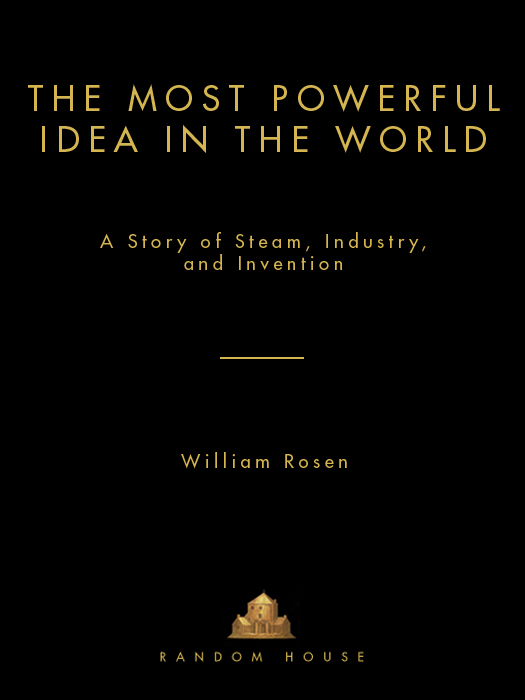
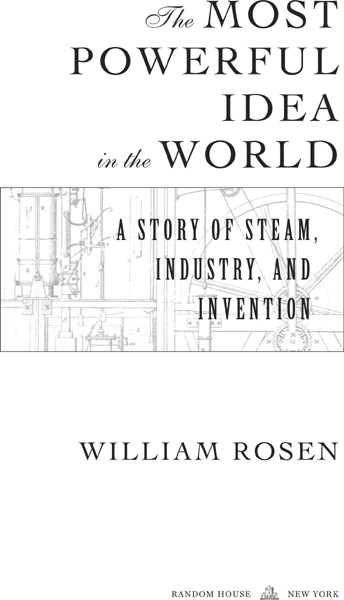
To Quillan, Emma, and Alex
my most valuable ideas
(and to Jeanine: my best one)
Prologue
ROCKET
concerning ten thousand years, a hundred lineages, and two revolutions
Chapter One
CHANGES IN THE ATMOSPHERE
concerning how a toy built in Alexandria failed to inspire, and how a glass tube made in Italy succeeded; the spectacle of two German hemispheres attached to sixteen German horses; and the critical importance of nothing at all
Chapter Two
A GREAT COMPANY OF MEN
concerning the many uses of a piston; how the worlds first scientific society was founded at a college with no students; and the inspirational value of armories, Nonconformist preachers, incomplete patterns, and snifting valves
Chapter Three
THE FIRST AND TRUE INVENTOR
concerning a trial over the ownership of a deck of playing cards; a utopian fantasy island in the South Seas; one Statute and two Treatises; and the manner in which ideas were transformed from something one discovers to something one owns
Chapter Four
A VERY GREAT QUANTITY OF HEAT
concerning the discovery of fatty earth; the consequences of the deforestation of Europe; the limitations of waterpower; the experimental importance of a Scotsmans ice cube; and the search for the most valuable jewel in Britain
Chapter Five
SCIENCE IN HIS HANDS
concerning the unpredictable consequences of sea air on iron telescopes; the power of the cube-square law; the Incorporation of Hammermen; the nature of insight; and the long-term effects of financial bubbles
Chapter Six
THE WHOLE THING WAS ARRANGED IN MY MIND
concerning the surprising contents of a Ladies Diary; invention by natural selection; the Flynn Effect; neuronal avalanches; the critical distinction between invention and innovation; and the memory of a stroll on Glasgow Green
Chapter Seven
MASTER OF THEM ALL
concerning differences among Europes monastic brotherhoods; the unlikely contribution of the brewing of beer to the forging of iron; the geometry of crystals; and an old furnace made new
Chapter Eight
A FIELD THAT IS ENDLESS
concerning the unpredictable consequences of banking crises; a Private Act of Parliament; the folkways of Cornish miners; the difficulties in converting reciprocating into rotational motion; and the largest flour mill in the world
Chapter Nine
QUITE SPLENDID WITH A FILE
concerning the picking of locks; the use of wood in the making of iron, and iron in the making of wood; the very great importance of very small errors; blocks of all shapes and sizes; and the tool known as the Lord Chancellor
Chapter Ten
TO GIVE ENGLAND THE POWER OF COTTON
concerning the secret of silk spinning; two men named Kay; a child called Jenny; the breaking of frames; the great Cotton War between Calcutta and Lancashire; and the violent resentments of stocking knitters
Chapter Eleven
WEALTH OF NATIONS
concerning Malthusian traps and escapes; spillovers and residuals; the uneasy relationship between population growth and innovation; and the limitations of Chinese emperors, Dutch bankers, and French revolutionaries
Chapter Twelve
STRONG STEAM
concerning a Cornish Giant, and a trip up Camborne Hill; the triangular relationship between power, weight, and pressure; George Washingtons flour mill and the dredging of the Schuylkill River; the long trip from Cornwall to Peru; and the most important railroad race in history
Epilogue
THE FUEL OF INTEREST
ROCKET

concerning ten thousand years, a hundred lineages, and two revolutions
ON THE GROUND FLOOR of the Science Museum in Londons South Kensington neighborhood, on a low platform in the center of the gallery called Making of the Modern World, is the most famous locomotive ever built.
Or what remains of it. Rocket, the black and sooty machine on display, designed and built in 1829 by the father and son engineers George and Robert Stephenson, no longer much resembles the machine that inaugurated the age of steam locomotion. Its return pipes are missing. The pistons attached to the two driving wheels are no longer at the original angle. The yellow paint that made it shine like the sun nearly two centuries ago is now not even a memory. Even so, the technology represented in the six-foot-long boiler, the linkages, the flanged wheels, and even in the track on which it rode are essentially the same as those it used in 1829. In fact, they are the same as those used for more than a century of railroading.
The importance of Rocket doesnt stop there. While the machine does, indeed, mark the inauguration of something pretty significanttwo centuries of mass transportationit also marks a culmination. Standing in front of Rocket, a museum visitor can, with a little imagination, see the thousand threads that lead from the locomotive back to the very beginning of the modern world. One such thread can be walked back to the first metalworkers who figured out how to cast the iron cylinders that drove Rockets wheels. Another leads to the discovery of the fuel that boiled the water inside that iron boiler. A thirdthe shortest, but probably the thickestleads back to the discovery that boiling water could somehow be transformed into motion. One thread is, actually, thread: Rocket was built to transport cotton goodsthe signature manufactured item of the first era of industrializationfrom Manchester to Liverpool.
Most of the threads leading from Rocket are fairly straightforward, but onethe most interesting oneforms a knot: a puzzle. The puzzle of Rocket is why it was built to travel from Manchester to Liverpool, and not from Paris to Toulouse, or Mumbai to Benares, or Beijing to Hangzhou. Or, for that matter, since the worlds first working model of a steam turbine was built in first-century Alexandria, why Rocket started making scheduled round trips at the beginning of the nineteenth century instead of the second.
Put more directly, why did this historical discontinuity called the Industrial Revolutionsometimes the First Industrial Revolutionoccur when and where it did?
The importance of that particular thread seems self-evident. At just around the time Rocket was being built, the world was owing to the employment of machinerybut also a transition to industry (or an industrial economy) from agriculture. Combining the two was not only revolutionary; it was unique.
Revolutionary and unique are both words shiny with overuse. Every century in human history is, in some sense, unique, and every year, somewhere in the world, something revolutionary seems to happen. But while love affairs, epidemics, art movements, and wars are all different, their effects almost always follow one familiar pattern or another. And no matter how transformative such events have been in the lives of individuals, families, or even nations, only twice in the last ten thousand years has something happened that truly transformed all of humanity.
Font size:
Interval:
Bookmark:
Similar books «The Most Powerful Idea in the World: A Story of Steam, Industry, and Invention»
Look at similar books to The Most Powerful Idea in the World: A Story of Steam, Industry, and Invention. We have selected literature similar in name and meaning in the hope of providing readers with more options to find new, interesting, not yet read works.
Discussion, reviews of the book The Most Powerful Idea in the World: A Story of Steam, Industry, and Invention and just readers' own opinions. Leave your comments, write what you think about the work, its meaning or the main characters. Specify what exactly you liked and what you didn't like, and why you think so.

